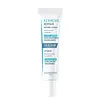What's inside
What's inside
 Key Ingredients
Key Ingredients

 Benefits
Benefits

 Concerns
Concerns

 Ingredients Side-by-side
Ingredients Side-by-side

Polyglyceryl-2 Triisostearate
EmulsifyingRicinus Communis Seed Oil
MaskingBis-Behenyl/Isostearyl/Phytosteryl Dimer Dilinoleyl Dimer Dilinoleate
EmollientHydrogenated Castor Oil Dimer Dilinoleate
Skin ConditioningHydrogenated Vegetable Oil
EmollientMethyl Hydrogenated Rosinate
PerfumingHelianthus Annuus Seed Wax
Skin ConditioningCera Alba
EmollientEthylhexyl Palmitate
EmollientButyrospermum Parkii Butter
Skin ConditioningOryza Sativa Bran Wax
Skin ConditioningHelianthus Annuus Seed Oil
EmollientButyrospermum Parkii Butter Unsaponifiables
Skin ConditioningCaprylic/Capric Triglyceride
MaskingPolyhydroxystearic Acid
EmulsifyingParfum
MaskingPropolis Extract
Skin ConditioningDiisostearyl Malate
EmollientTrimethylolpropane Triisostearate
EmollientMel
EmollientPropanediol
SolventEthyl Vanillin
MaskingPentaerythrityl Tetra-Di-T-Butyl Hydroxyhydrocinnamate
AntioxidantWater
Skin ConditioningTocopherol
AntioxidantTrihydroxystearin
Skin ConditioningIsostearic Acid
CleansingAscorbyl Palmitate
AntioxidantPolyglyceryl-3 Polyricinoleate
EmulsifyingLecithin
EmollientSodium Hyaluronate
HumectantMontmorillonite
AbsorbentAnthocyanins
Cosmetic ColorantMaltodextrin
AbsorbentPropyl Gallate
AntioxidantLavandula Angustifolia Oil
MaskingCitric Acid
BufferingCI 77891
Cosmetic ColorantCI 15985
Cosmetic ColorantCI 45380
Cosmetic ColorantCI 77491
Cosmetic ColorantCI 77499
Cosmetic ColorantCI 15850
Cosmetic ColorantPolyglyceryl-2 Triisostearate, Ricinus Communis Seed Oil, Bis-Behenyl/Isostearyl/Phytosteryl Dimer Dilinoleyl Dimer Dilinoleate, Hydrogenated Castor Oil Dimer Dilinoleate, Hydrogenated Vegetable Oil, Methyl Hydrogenated Rosinate, Helianthus Annuus Seed Wax, Cera Alba, Ethylhexyl Palmitate, Butyrospermum Parkii Butter, Oryza Sativa Bran Wax, Helianthus Annuus Seed Oil, Butyrospermum Parkii Butter Unsaponifiables, Caprylic/Capric Triglyceride, Polyhydroxystearic Acid, Parfum, Propolis Extract, Diisostearyl Malate, Trimethylolpropane Triisostearate, Mel, Propanediol, Ethyl Vanillin, Pentaerythrityl Tetra-Di-T-Butyl Hydroxyhydrocinnamate, Water, Tocopherol, Trihydroxystearin, Isostearic Acid, Ascorbyl Palmitate, Polyglyceryl-3 Polyricinoleate, Lecithin, Sodium Hyaluronate, Montmorillonite, Anthocyanins, Maltodextrin, Propyl Gallate, Lavandula Angustifolia Oil, Citric Acid, CI 77891, CI 15985, CI 45380, CI 77491, CI 77499, CI 15850
Ricinus Communis Seed Oil
MaskingBis-Diglyceryl Polyacyladipate-2
EmollientParaffinum Liquidum
EmollientGlycerin
HumectantIsopropyl Palmitate
EmollientHydrogenated Vegetable Oil
EmollientCetearyl Ethylhexanoate
EmollientHydrogenated Polyisobutene
EmollientPolyethylene
AbrasiveVp/Hexadecene Copolymer
Beeswax
Emulsion StabilisingHydrogenated Castor Oil
Emollient10-Hydroxydecenoic Acid
Skin ConditioningDisteardimonium Hectorite
StabilisingGlyceryl Linoleate
EmollientGlyceryl Linolenate
EmollientGlyceryl Oleate
EmollientGlyceryl Palmitate
EmollientGlyceryl Stearate
EmollientGlycine Soja Oil
EmollientIsopropyl Myristate
EmollientTocopherol
AntioxidantTocopheryl Acetate
AntioxidantWater
Skin ConditioningRicinus Communis Seed Oil, Bis-Diglyceryl Polyacyladipate-2, Paraffinum Liquidum, Glycerin, Isopropyl Palmitate, Hydrogenated Vegetable Oil, Cetearyl Ethylhexanoate, Hydrogenated Polyisobutene, Polyethylene, Vp/Hexadecene Copolymer, Beeswax, Hydrogenated Castor Oil, 10-Hydroxydecenoic Acid, Disteardimonium Hectorite, Glyceryl Linoleate, Glyceryl Linolenate, Glyceryl Oleate, Glyceryl Palmitate, Glyceryl Stearate, Glycine Soja Oil, Isopropyl Myristate, Tocopherol, Tocopheryl Acetate, Water
 Reviews
Reviews

Ingredients Explained
These ingredients are found in both products.
Ingredients higher up in an ingredient list are typically present in a larger amount.
Hydrogenated Vegetable Oil is created by adding hydrogen to vegetable oil in order to give it more stability. This process also raises the melting point of vegetable oil. In cosmetics, it is an emollient.
Emollients help soothe and soften the skin. They do this by creating a protective film on your skin. This barrier helps trap moisture and keeps your skin hydrated. Emollients may be effective at treating dry or itchy skin.
The term "Hydrogenated Vegetable Oil" is an umbrella term and can refer to a variety of vegetable oils and blends of: sunflower oil, soybean oil, olive oil, coconut oil, palm oil, and more.
Due to the differences in vegetables, the benefits may vary.
Learn more about Hydrogenated Vegetable OilRicinus Communis Seed Oil is the INCI name for castor oil.
Castor Oil helps moisturize the skin. It is rich in a fatty acid called ricinoleic acid. This fatty acid helps prevent moisture loss on the skin. This helps keep your skin soft and hydrated. Ricinoleic acid also has anti-inflammatory and pain reducing properties.
Besides hydrating the skin, castor oil is also used to hydrate hair. By keeping the hair shaft moisturized, breakage is decreased. More studies are needed to show castor oil's effective on stimulating hair growth.
Castor oil is created by cold-pressing castor seeds and then purifying the oil with heat. It was used in Ancient Egypt as fuel in lamps and to help treat eye irritation.
The term 'fragrance' is not regulated in many countries. In many cases, it is up to the brand to define this term. For instance, many brands choose to label themselves as "fragrance-free" because they are not using synthetic fragrances. However, their products may still contain ingredients such as essential oils that are considered a fragrance.
Learn more about Ricinus Communis Seed OilTocopherol (also known as Vitamin E) is a common antioxidant used to help protect the skin from free-radicals and strengthen the skin barrier. It's also fat soluble - this means our skin is great at absorbing it.
Vitamin E also helps keep your natural skin lipids healthy. Your lipid skin barrier naturally consists of lipids, ceramides, and fatty acids. Vitamin E offers extra protection for your skin’s lipid barrier, keeping your skin healthy and nourished.
Another benefit is a bit of UV protection. Vitamin E helps reduce the damage caused by UVB rays. (It should not replace your sunscreen). Combining it with Vitamin C can decrease sunburned cells and hyperpigmentation after UV exposure.
You might have noticed Vitamin E + C often paired together. This is because it is great at stabilizing Vitamin C. Using the two together helps increase the effectiveness of both ingredients.
There are often claims that Vitamin E can reduce/prevent scarring, but these claims haven't been confirmed by scientific research.
Learn more about TocopherolWater. It's the most common cosmetic ingredient of all. You'll usually see it at the top of ingredient lists, meaning that it makes up the largest part of the product.
So why is it so popular? Water most often acts as a solvent - this means that it helps dissolve other ingredients into the formulation.
You'll also recognize water as that liquid we all need to stay alive. If you see this, drink a glass of water. Stay hydrated!
Learn more about Water